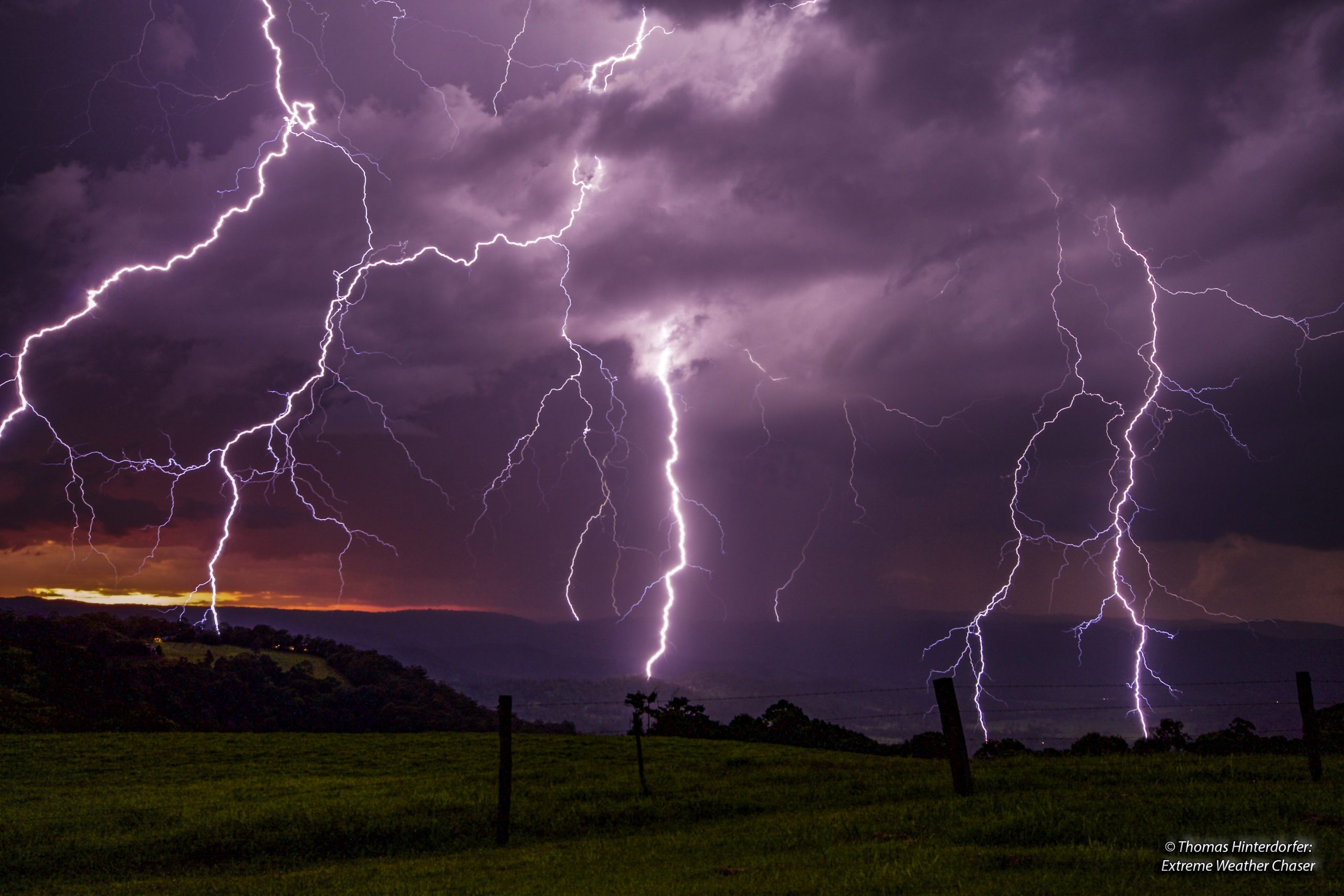
16 Oct Lightning & How does it occur
[fusion_builder_container hundred_percent=”no” equal_height_columns=”no” menu_anchor=”” hide_on_mobile=”small-visibility,medium-visibility,large-visibility” class=”” id=”” background_color=”” background_image=”” background_position=”center center” background_repeat=”no-repeat” fade=”no” background_parallax=”none” enable_mobile=”no” parallax_speed=”0.3″ video_mp4=”” video_webm=”” video_ogv=”” video_url=”” video_aspect_ratio=”16:9″ video_loop=”yes” video_mute=”yes” overlay_color=”” video_preview_image=”” border_color=”” border_style=”solid” margin_top=”” margin_bottom=”” padding_top=”20px” padding_right=”” padding_bottom=”20px” padding_left=”” type=”legacy”][fusion_builder_row][fusion_builder_column type=”1_1″ layout=”1_1″ spacing=”” center_content=”no” hover_type=”none” link=”” min_height=”” hide_on_mobile=”small-visibility,medium-visibility,large-visibility” class=”” id=”” background_color=”” background_image=”” background_position=”left top” background_repeat=”no-repeat” border_color=”” border_style=”solid” border_position=”all” padding_top=”” padding_right=”” padding_bottom=”” padding_left=”” margin_top=”” margin_bottom=”” animation_type=”” animation_direction=”left” animation_speed=”0.3″ animation_offset=”” last=”true” border_sizes_top=”0″ border_sizes_bottom=”0″ border_sizes_left=”0″ border_sizes_right=”0″ first=”true”][fusion_text]
Lightning is one of the most unpredictable and dangerous phenomenons in regards to weather. Lightning is the key to a shower becoming classified as a thunderstorm, and its also one of the most fascinating features that can get weather enthusiasts and “everyday” people both in awe. The cracking sound of lightning and the ominous close range, weirdly shaped, dynamic lightning strikes keep everyone captivated… and once its done, most people cant wait for the next time. But… what is lightning, whats it made up of, how does it form, why is it dangerous, what are the different types of lightning, what happens when it hit certain things… theres a million questions when it comes to lightning, and in this we will answer some of them for you.
How does lightning form?
Lightning is an electrical current which can either travel across the sky or towards the ground. The thunderstorm which lightning develops within becomes electrically charged (as is every object on Earth) and it becomes both negatively and positively charged. The lighter, more positively charged particles develop at the top of the thunderstorm and the heavier, more negatively charged particles sink to the bottom of the thunderstorm (near the base). When these the charges grow large enough, then a giant spark occurs which is what we know as lightning.
The majority of lightning happens within the cloud due to the attraction between positive and negative charges. If the surface of the Earth becomes intensely positively charged, then the attraction between negative charges in the base of the cloud and positive charges on the surface of the Earth have the ability to cause cloud to ground lightning. If these positive charges flow through things such as buildings, trees, lightning conductors or even people… then there is a chance that the lightning will strike these objects instead of the ground.
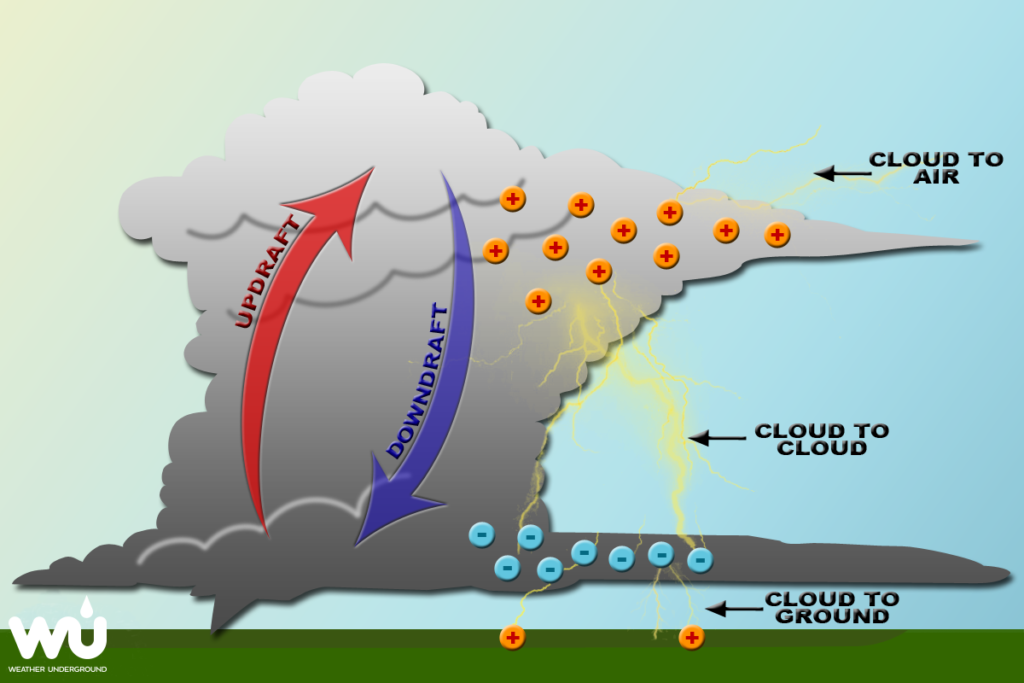
Mechanics of how lightning forms via Weather Underground
Lightning facts:
-
There are on average, more than 2,000 active thunderstorms on earth at any given time, each with the potential to produce more than 100 lightning strikes (whether they are flashes or bolts) per second.. this means there is up to 8 million lightning strikes per day.
-
Despite how big some bolts are, they rarely are wider than about the width of a pencil however they can be several kilometres long.
-
A single lightning strike has as much energy as 1 ton of dynamite
-
A single lighting strike is actually made up by as many as 12 individual ‘strokes’, each of which lasts less than a few thousandths of a second.

6 image stack of a lightning barrage over North Brisbane in October 2014 via HSC Photographer Jason Bull
Different types of lightning:
-
(CG) Cloud to Ground: This is when the lightning strike extends from the cloud to the Earth’s surface
-
(CC) Cloud to Cloud: This is when a lightning strike goes from one side of the cloud to another and what is commonly called a “crawler”
-
(CA) Clear-Air Lightning Strike: This is when the strike extends from the cloud outwards, striking the earth well ahead or well behind the precipitation core of the thunderstorm
-
Blue Jets: These emerge from the top of the thundercloud, but aren’t directly associated with cloud to ground lightning. The extend upwards in narrow cones, fanning out at heights of up to 50km. They last even less time than your typical bolt
-
Red Sprites: These can appear directly above a powerful thunderstorm and usually as a large but very weak flash. They usually happen simultaneously with a powerful cloud to ground strike and can extend as high as 100km above the thunderstorm. They can last for up to a few seconds but typically are red in colour. They can only be seen at night but are very very rarely witness by the human eye, and usually require a long exposure on a DSLR camera to witness them.
-
Elves: These are rapidly expanding disk shapes that can glow for up to 500km across. They last less than one one thousandth of a second and occur up to 100km above a powerful thunderstorm. They were first discovered by a space shuttle in 1992 and are believed to occur when an energetic electromagnetic pulse extends into the ionosphere. They cant be seen on the ground due to their size potentially being far too large.
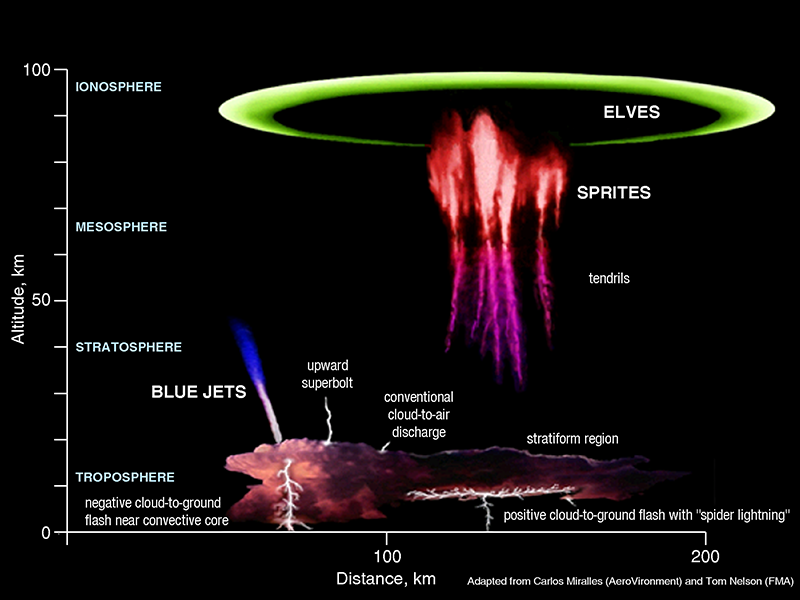
Different types of Lightning via NOAA
What is lightning made up of?
As stated above, lightning is made from the interaction between positive and negative particles / ions in the cloud and between the cloud and ground.. but lightning itself is made up of various elements. Lightning discharges are a major source of nitrogen oxide gases. The 2 primary gases (nitric oxide and nitrogen dioxide) are formed during the lightning discharge when the air is heated to its maximum temperature. Since the air is made up of both nitrogen and oxide atoms, the new compound is formed when the lightning channel expand outwards and cools. The amount of nitrogen oxide that is formed depends on how rapid the cooling of the lightning channel is. Due to this chemical occurrence, lightning is vital for the survivability of the ecosystem and Earth in general.
Correlation between lightning and thunder?
Lightning has been detected to travel up to 300 million metres per second, this is compared to the speed of sound which is around 300 metres per second. That means lightning occurs around 1 million times faster than it sounds. The sound of lightning is what we know as thunder. Due to the difference in speed and sound, thunder will always occur after lightning and its the distance between you and the lightning strike that determines how soon you will hear the thunder. A common way of working out your distance from the storm is to count the time between the flash or strike and the start of the rumble of thunder. The time you come up with (in seconds), is roughly how many kilometres you are from that particular strike.
Dangers of lightning?
One of the dangers of lightning is that it is so unpredictable. No computer modelling, satellite imagery or anything of that nature… nothing at all on Earth can detect when and where a lightning bolt will develop and strike ahead of time. While we all know lightning occurs during thunderstorms, and we love a good light show at night during a thunderstorm… what some people fail to realise though is that clear-air lightning strikes (CA) have the ability to strike at ridiculous distances from thunderstorms. In fact, there have been a few instances in the past where we have seen bolts up to 100km from the nearest part of the cell striking the Gold Coast and up to 80km out the other side of the cell. While most clear air lightning strikes occur between 0 and 10km from the storm itself, evidence shows that in the most violent storms (due to the anvil) its possible for lightning to strike much further away and this is why during thunderstorms its important to stay sheltered.
Lightning is one of the deadliest phenomenons in nature. Due to the amount of electricity that it contains and the extreme heat within the strike (up to 30,000ºc which is 6 times hotter than the sun), lightning can kill people instantly and while lightning related deaths thankfully aren’t overly common in Australia (although they do occur several times a year during the storm season), up to 60 people on average are killed in the United States, with hundreds if not thousands more inured also.
By virtue of averages, some statistics have been discovered as to where the most common lightning-related deaths occur. More than 54% of people are killed in open fields, ball parks or golf courses. 23% of people are killed under trees which get struck. 12% of people at the beach or in the water / watercraft such as boats. 7% of people whilst operating farming equipment due to the open nature of the fields and the ion attraction that farming equipment has, and 4% is elsewhere. While you are never 100% absolutely safe when lightning is around, these stats may help in increasing your chances of being safe.

Facts about lightning related deaths via Accuweather
Lightning if it doesn’t kill you, has the ability to severely burn you. If a lightning bolt strikes you, it has the ability to interact with your body in different ways as it seeks ground contact. Depending on how your body is in contact with the ground results in various channels the strike can take. The most common is through your body (not around it). This is when the strike will enter a part of your body, travel internally through you – potentially hitting or narrowly missing vital organs and then exiting another part of your body. This can cause major problems internally as whatever it hits, can be severely burnt or ruptured. Another way is externally, when the bolt will travel around your body and this can cause widespread major burns to your skin. Both methods have the ability to travel through your veins and cause excruciatingly painful burns which mimic spider webs on your skin, if it occurs internally though… then the electric current can travel through your blood supply and enter your heart, causing an extreme heart attack.
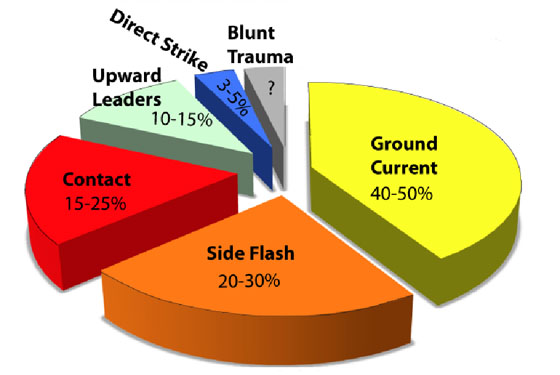
Lightning injury related facts via Environmental Canada
What happens when lightning hits certain things?
Not all things are burnt or explode when lightning strikes it. Although the most memorable lightning result that we know of is a tree or light pole being set on fire, maybe even some grass being caught alight as the strike hits it. but different things happen to other objects.
-
Sand: Lightning due to its extreme temperature and the fact that sand has elements of quartz and silica in it… lightning can burn or fuse the sand into silica glass in a very localised area. The silica glass (sand) also has the ability to move up the lightning strike and create cement-like figures that can stay there permanently if untouched.
-
Water (Ocean, Pool, Lake, Pond): When lightning strikes the water, unlike land.. it has the ability to spread out upon contact. This makes lightning extremely dangerous if you’re in the water as you don’t necessarily need to take a direct strike from the lightning bolt to be severely impacted. Its also possible for boats, some distance from the lighting strike to be impacted.
-
Water (Fish): It may seem silly asking this, as lightning (as stated above) spreads out when it hits the water…but what about fish under the water? well if a fish nearby is near the surface or happens to be surfacing then they are at risk of being struck and killed (as is any other marine life).
-
Car: Cars provide some protection from lightning, if the car happens to be unlucky enough to be struck. The metal frame around the car directs the currents to the ground. In saying that, vehicles still have the ability to be damaged both externally through burns mainly.. but also internally depending on how the strike moves around the car, as it has the ability to fry electronic functions such as radio and dashboard facilities
-
Aeroplane: Planes whilst they try to avoid thunderstorms during air travel, they are still struck and far more often than people think. In fact, the average plane can be struck on average more than once per year. The fantastic thing about planes is that they are rarely impacted by lightning due to the way they are engineered. The lightning (by plane design) will normally hit either the tail, nose or wing tips. The lightning if it so chooses to, will move around the plane without going through the plane. Apart from seeing a flash and hearing a rumble, you as a passenger won’t see anything of concern and in fact, the electronics on the plane will also very rarely be impacted (apart from the normal static due to thunderstorms). In saying that, the thunder within the cabin could be ridiculously loud (as you are basically in the lightning strike when it happens).
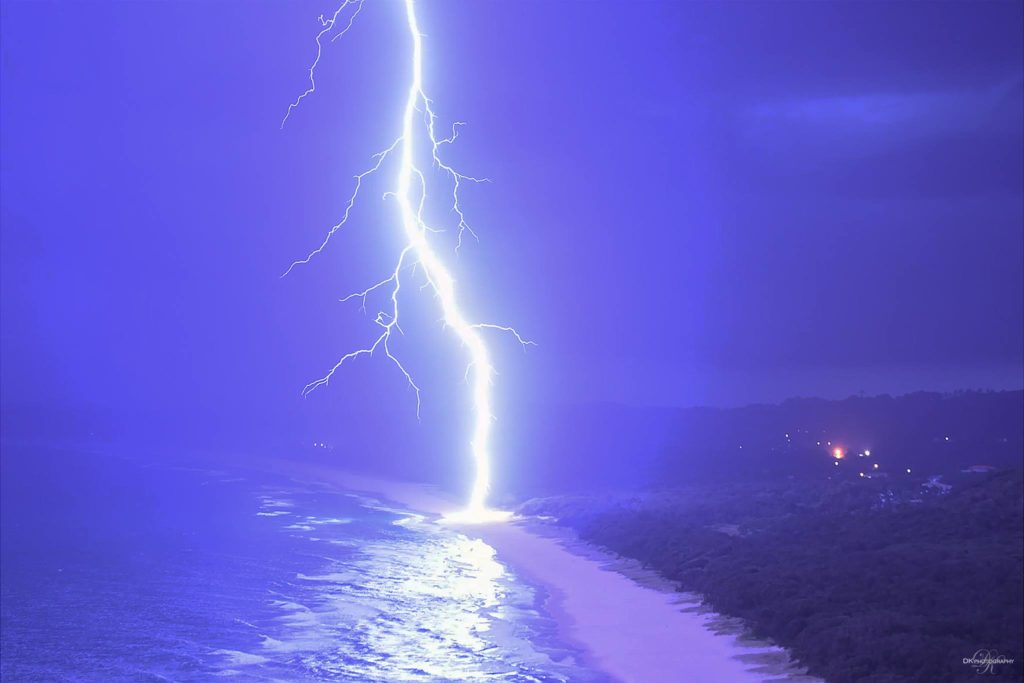
Lightning striking the beach at Byron Bay on January 2nd 2017 via HSC Photographers DK Photography
[/fusion_text][/fusion_builder_column][/fusion_builder_row][/fusion_builder_container]


Sorry, the comment form is closed at this time.